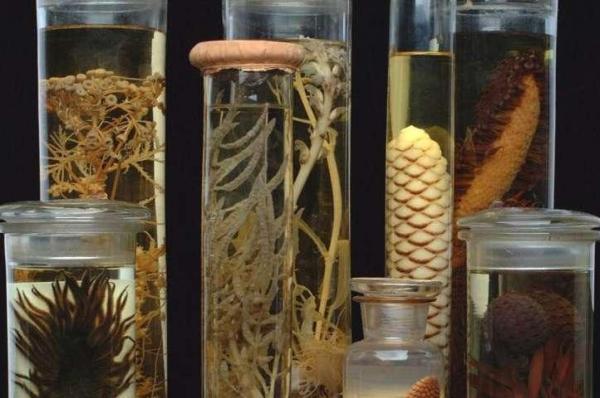OXFORD, England, Nov. 16 (UPI) — The world’s natural history museums are going to need some new identification placards. According to researchers at the University of Oxford, half of all natural history specimens may be incorrectly named.
The revelation isn’t the product of a specific mistake, but the accumulation of years and years of misnaming at museums and research institutions all over the world.
Such mistakes aren’t necessarily the result of incompetence. Properly identifying species is often difficult — especially rare plants and insects. Sometimes, the task falls on scientists at small museums who have little experience studying or identifying the unusual species that makes their way into their hands.
An incorrect identification may have correctly reflected the flawed science of the time. As science is updated, identification mistakes may be corrected in scientific literature, but not always in the collections.
Whether or not these mistakes are arrived at honestly and understandably is largely irrelevant. For biologists trying to improve and advance scientific knowledge, these past mistakes can prove costly.
“Without accurate names on specimens, the records held in collections around the world would make no sense, as they don’t correspond to the reality outside.” researcher Robert Scotland, a plant scientist at Oxford, explained in a press release.
Past mistakes can be be perpetuated as more and more scientific collections are uploaded online. Scientists rely on these past collections, online and off, to analyze new information.
To measure the size of the problem of misidentified specimens, Scotland and his colleagues developed a three-pronged model. The model was designed to estimate three ways species might come to be misidentified.
The scientists published their results this week in the journal Current Biology.
First, researchers looked at how often species names are changed over time, as scientists understanding of a family’s lineage improves. In 2014, scientists undertook an analysis of 4,500 specimens of the African ginger genus Aframomum. Some 58 percent of the specimens were found to be misidentified.
Scotland and his colleagues suggest such a rate might reflect the number of misidentifications among other plant groups.
Secondly, researchers looked at how often a museum’s scientists might name the same plant differently than scientists at other museums. Often, newly discovered specimens are collected, divided and distributed to range of institutions, where they are then identified by an in-house scientist.
“It’s a bit like separating identical twins at birth,” said first study author Zoe Goodwin.
Researchers looked at 9,222 collections of Dipterocarpaceae, a family of rain-forest trees from Asia, which had been divided into enough duplicates to total 21,075 specimens, nearly a third of which had been named differently at different institutions.
Lastly, researchers looked at how many misidentifications have been perpetuated by online records. In analyzing some 49,500 specimens of the Ipomoea genus — a large group of plants which includes the sweet potato — researchers found 40 percent had outdated synonyms instead of the correct scientific monogram, 16 percent were incorrectly named and 11 percent were without a species designation.
While the researchers mostly focused on tropical plants, they say there’s evidence that the world of insect identification is even more jumbled.
“We think a conservative estimate is that up to half the world’s natural history specimens could be incorrectly named,” said Goodwin.
Part of the problem, the researchers argue, is time intensive nature of monographic analysis, like the 2014 ginger study that corrected more than 2,000 misnamed specimens. The other part of the problem is that modern science moves so fast. There simply aren’t enough resources or hours in the day to keep up.
Researchers say digitized collections and genetic analysis will help solve some of these lingering identification problems, but that reform efforts must be integrated with taxonomic projects. In other words, scientists need to continue to analyze and correct the naming of physical specimens.






